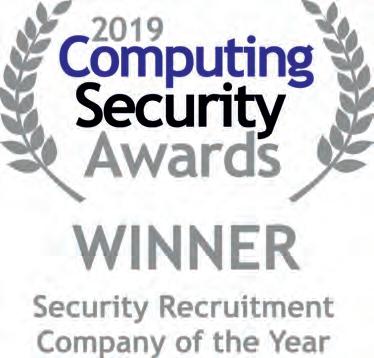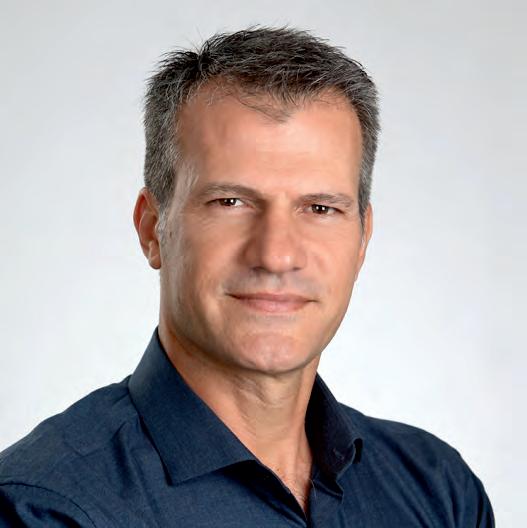
5 minute read
Tech-Know Insights
What a tech CEO can teach your business about digital
About the Author
Advertisement
Pam Bateson is an expert coach and mentor in business, training others to Masters level qualifications and supervising coaches. She has worked within the healthcare, retail, hotels, construction, media, agencies, education and public sector. She specialises in Coaching, Mentoring, Employee Engagement, Change Management, Learning and Development and Organisational Design. She has worked with all levels in organisations from graduates to the CEO. She has designed change programmes that connect projects, outcomes, training and coaching. The performance outcomes have been outstanding. She is CEO and Co-founder at Thrive Partners.
www.insightssuccess.com Pam Bateson CEO & Co-founder Thrive Partners

am Bateson set up Thrive P Partners, an on-demand coaching company, three years ago. In this article, she shares her point of view on how important humans are in a more digital world, what she’s learned as a tech CEO, and what this means when you’re looking to use tech in a way that’s both disruptive and works for customers.
In October 2015, I gave up a successful career as a management consultant and coach to set up Thrive Partners. Lots of people thought I was crazy. I was approaching 50, with two children still at home. But for the decade running up to that decision, I’d been thinking about a better way to deliver coaching – supported by digital, to share more widely the coaching tools I’d used to help clients for many years.
This was the business I set out to build three years ago. Today, we’re working with 25 clients on five continents – delivering our own brand of on-demand coaching, backed with insights for the whole business. The learning curve has been steep – particularly for someone who, by their own confession, didn’t have a lot of experience in learning technology. So here, I wanted to share some of the things we’ve learned – and what it might mean for your business.
Dream big I didn’t really set out to build a business that would be considered disruptive, but my background as a lean engineer and coach did mean that we ripped up the rulebook when it came to the coaching industry. We scrapped the idea that you needed to meet face to face, and that sessions had to last an hour, or even two hours. And we made it a lot easier for people to access a coach to answer the questions they had there and then – increasing access so people could chat to an expert within an hour.
Working with my co-founder, we then rebuilt the industry by asking the biggest questions we could imaging. What if we could make coaching available to whole organisations? What if we could get listening as valued as speaking? And what if we could help organisations learn as quickly as individuals?
I found these questions irresistible: I wanted to do for coaching what Uber had done for getting a taxi, Netflix had done for home entertainment, and Tinder had done for dating. It’s these big dreams that have galvanised our success in the last few years – and which has set us in the right direction for the future.
Build for modern users Despite big dreams, we’ve also made our fair share of mistakes! A lot of them mistakes happened when we took our attention away from our end customers. It sounds obvious to see it there on the page. But it can be easy to lose sight of the customers that matter most, especially when, as a tech CEO, sometime we get preoccupied with a shiny piece of new technology.
So, what to consider first when it comes to users? The main thing to bear in mind is that they expect experiences that are easy and fast to access – a shift brought about by what we call the ‘Amazon Prime Mindset.’ In this era, clunky user experiences reduce the chances of uptake of services. In short, if your technology can’t match or exceed the quality of digital experience people get in their everyday lives, then you’ll need to go back to the drawing board.
Create wins for the many So, if users come first – who else can we harness the power of technology for?
Our answer? Everyone else in the system.
Early on in the development of our MyThrive platform, we realised that delivering digitally would enable us to do more than just scale and facilitate coaching in global organisations; it would also mean we could spot trends and patterns within communities of users, in organisations or society at large. Just as carefully listening has a powerful and transformative role in one-to-one coaching conversations, carefully listening to and analysing anonymised version of the conversations we host has a powerful and transformative role within whole organisations. The whole-system insights we produced has helped to make sales processes smoother, improved communications and created more opportunities for people to learn.
Keep it human With suicide being the biggest killer of men under 45, loneliness sweeping through developed economies in epidemic proportions and a third of all young people suffering from anxiety, I strongly believe that we have a duty to keep talking to each other as a society.
We believe that keeping the art of conversation alive in this digital age is essential; only humans can master creativity, empathy, humour and imagination in a way that’s compelling. Information is everywhere, so we’re using technology differently – to offer real human experiences at scale, at any time of the day, whenever our clients need a conversation, for everything you can’t Google.
And what of the future? Curiously, even the structures of artificial intelligence and machine learning look set to mimic human patterns. It’s still early days, but leaders in this space talk of ‘deep learning’ with AI – by layering up different tools that connect in the same way as our brain’s neural networks.
And so, the next three years? My recent experiences have led us to ask even bigger questions than we did to begin with – which I suspect will lead to our next irresistible set of adventures! What if we could transform learning management systems into learning ecosystems? What if any community of learners could connect with any community of teachers? And what if a better understanding of outcomes from learning could help both individuals, organisations and society to thrive?
I for one believe there are exciting times ahead.








